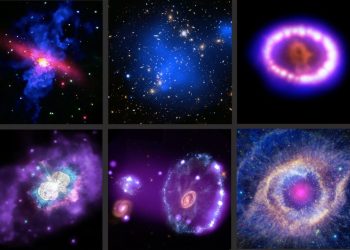A recent study suggests that individuals who report witnessing unidentified flying objects (UFOs) may not be prone to cognitive misperceptions but instead may possess specific personality traits that make them more likely to experience such phenomena.
Key Findings by Cardiff Metropolitan University
Clinical Psychologist Dr. Daniel Stubbings from Cardiff Metropolitan University led a team to explore the factors contributing to UFO sightings, now often referred to as unidentified anomalous phenomena (UAP) by the U.S. Department of Defense. The research, published in the Journal of Scientific Exploration, delved into the “big five” personality traits—extraversion, neuroticism, openness, agreeableness, and conscientiousness—alongside schizotypy traits, which are behaviors resembling those found in schizophrenia. The aim was to distinguish UAP experiencers from those who had not reported such sightings.
Understanding the Big Five Personality Traits
The concept of the big five personality traits emerged in the 1970s through research led by Paul Costa and Robert R. McCrae of the National Institutes of Health and Warren Norman and Lewis Goldberg from the University of Michigan at Ann Arbor and the University of Oregon. These traits are:
- Neuroticism: Reflects emotional instability, characterized by anxiety, moodiness, and low self-assurance.
- Extraversion: Includes cheerfulness, initiative, and communicativeness.
- Openness: Indicates a preference for innovation and creativity.
- Agreeableness: Influences how individuals interact with others, including traits like friendliness and empathy.
- Conscientiousness: Measures organization and dependability, with high scores indicating motivation and discipline.
The Study’s Findings
Dr. Stubbings’ study involved 206 participants, split evenly between those who reported UAP sightings and those who did not. The analysis revealed three distinct personality groups:
- Average Traits Group: Exhibited average levels across all traits.
- Neurotic/Schizotypy Group: High in neuroticism and schizotypy traits.
- O-ACE Group: High in openness, agreeableness, conscientiousness, and extraversion, but low in neuroticism and schizotypy traits.
The study concluded that individuals in the O-ACE group were more likely to report UAP sightings. Contrary to common stereotypes suggesting that UFO witnesses are highly neurotic or prone to perceptual anomalies, the data showed that personality profiles high in conscientiousness, openness, and low in neuroticism were more predictive of such experiences.
Implications and Future Research
Dr. Stubbings pointed out that while the current data shows a statistical relationship, further research is necessary to understand why individuals with certain personality traits are more likely to report UAP sightings. He hypothesized that people high in conscientiousness might be more willing to acknowledge and report their experiences.
Additionally, the study highlighted that only 28% of participants reported their sightings, with a mere 14% using formal UFO reporting organizations. This underreporting is attributed to stigma and a lack of proper channels for reporting.
Dr. Stubbings initiated his research by referencing earlier studies on UAPs, such as a 2011 paper published in the Applied Cognitive Psychology Journal, which suggested that certain personality factors could predict belief in UFOs. This led to the hypothesis that personality traits not only influence belief in UFOs but also the likelihood of witnessing and reporting such phenomena.
Addressing the Broader Implications
Dr. Stubbings emphasized the need for ongoing dialogue about the psychological and mental health aspects related to UAP sightings. Understanding the personality traits and psychological drivers behind these experiences is crucial for the scientific community.
In collaboration with colleagues Sophie Ali and Alexander Wong, Dr. Stubbings published their findings in the Spring 2024 issue of the Journal of Scientific Exploration. Their work calls for further investigation into this intriguing intersection of psychology and the unexplained phenomena of UAP sightings.











